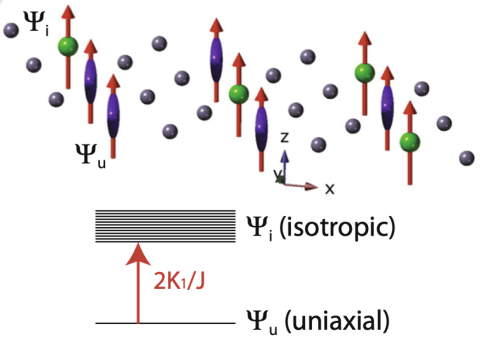
Initiation of a spin-reorientation in TbMn6Sn6 by Tb orbital fluctuations revealed by inelastic neutron scattering (INS) experiments.
Temperature-dependent occupancy of uniaxial and isotropic orbital states appear quasistatic, resembling a binary orbital alloy. Their population controls the stability of uniaxial and easy-plane ferrimagnetic order, affecting topological properties that depend on the magnetization direction.
- TbMn6Sn6 consists of ferromagnetic Mn kagome layers and Tb triangular layers with opposite magnetization, forming a ferrimagnet.
- INS measurements were performed at the ARCS Spectrometer at the SNS.
- High and low-energy Tb spin modes represent excitations out of uniaxial and isotropic orbital states. These modes coexist at intermediate temperatures.
- Random-phase approximation calculations using two-state orbital model best describe the INS data.
- This can be added to systems that are understood as quantum binary alloys, such as mixed valent metals, low/high-spin magnets, and Ising magnets.
S. X. M. Riberolles, S. X. M. Riberolles, Tyler J. Slade, R. L. Dally, P. M. Sarte, Bing, Tianxiong Han, H. Lane, C. Stock, H. Bhandari, N. J. Ghimire, D. L. Abernathy, P. C. Canfield, J. W. Lynn, B. G. Ueland and R. J. McQueeney, Orbital character of the spin reorientation transition in TbMn6Sn6. Nat. Comm. 14, 2658 (2023) . https://doi.org/10.1038/s41467-023-38174-5
